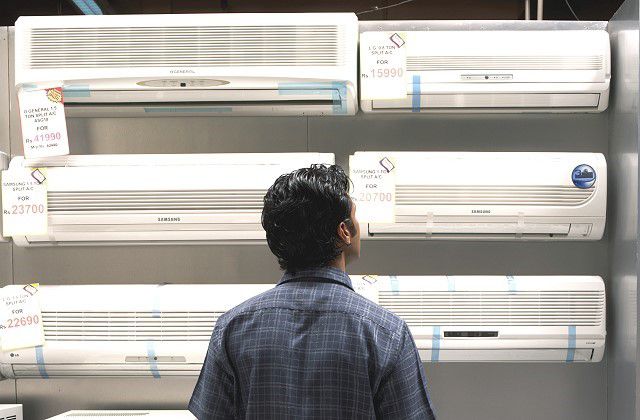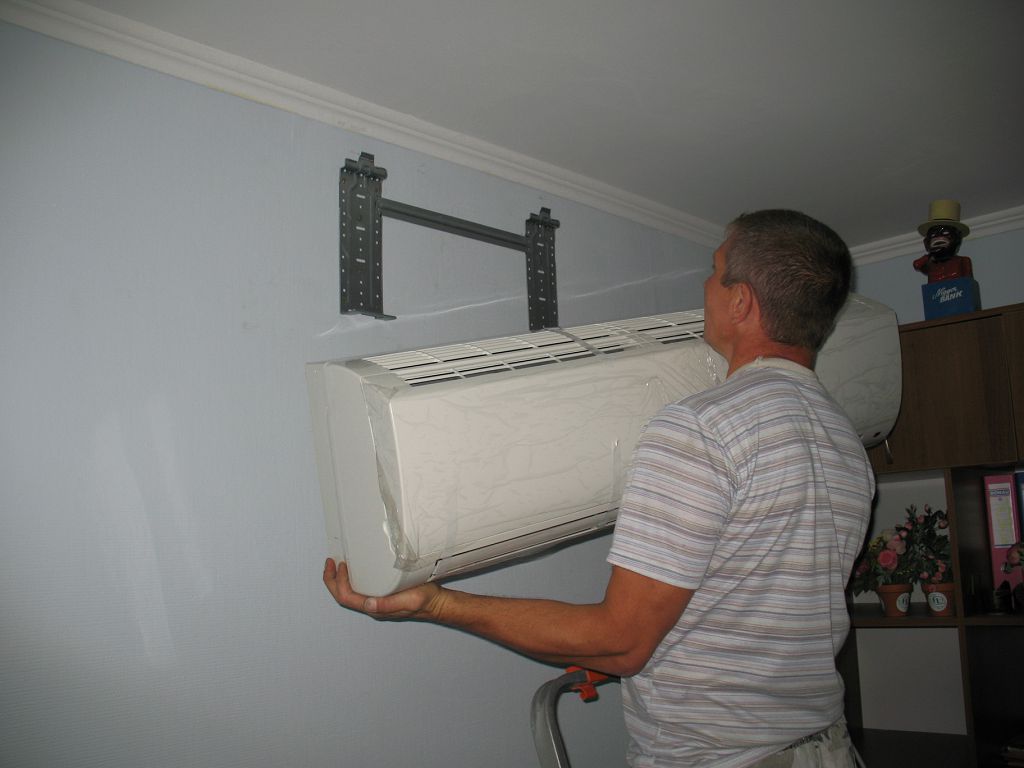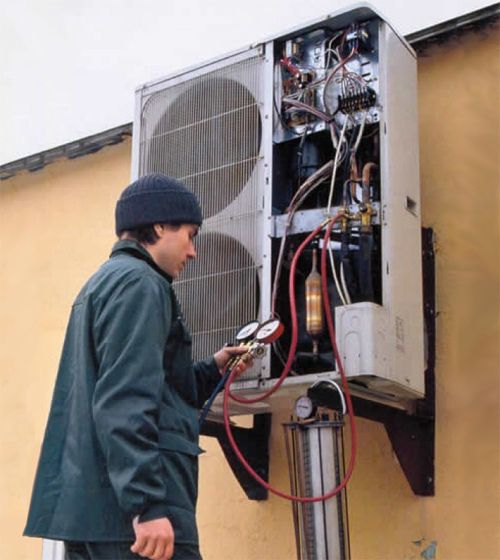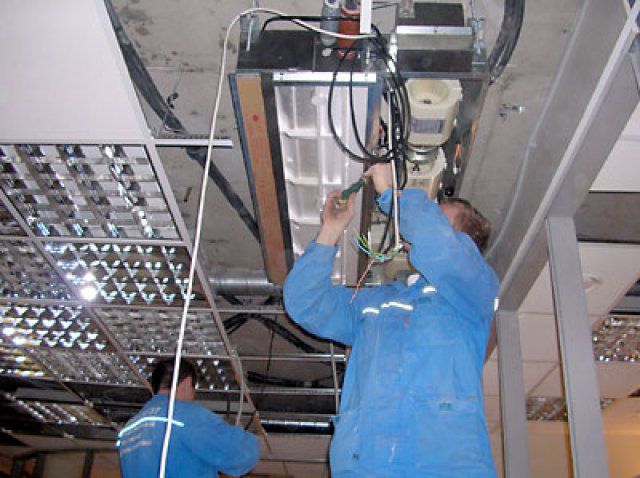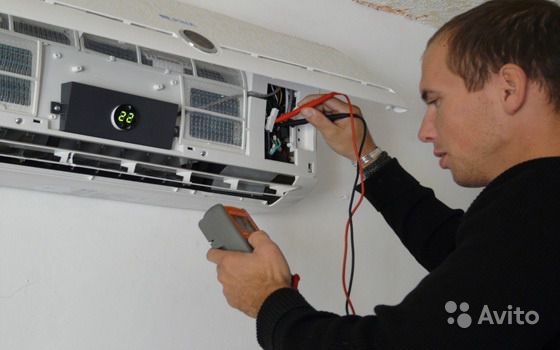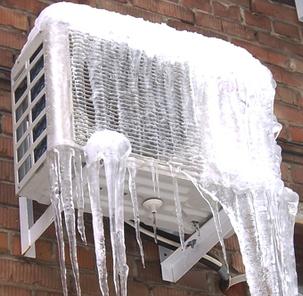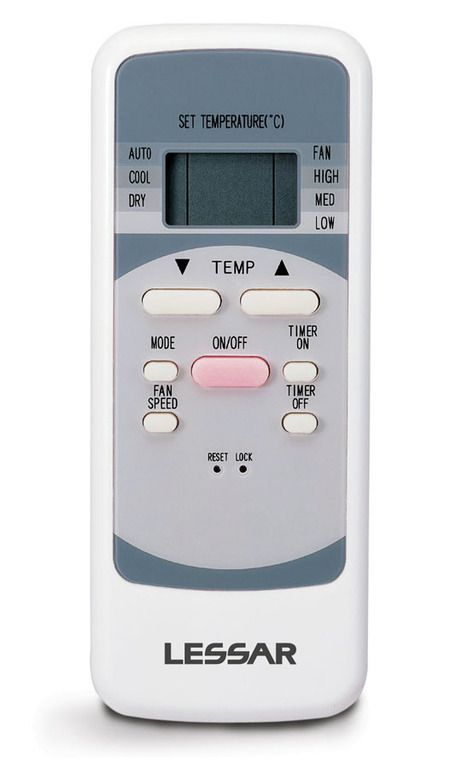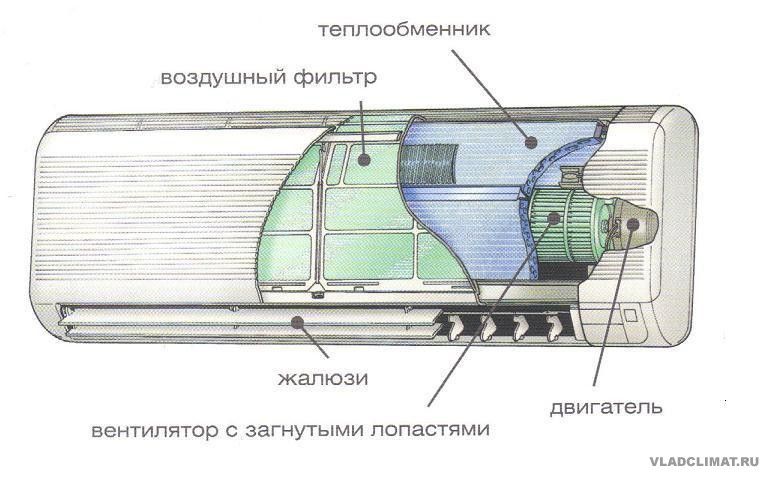Monoblock and split-system refer to air conditioning devices in closed rooms in the mode of automatic control of the parameters of the internal atmosphere: purity, relative humidity and temperature.
Types and principles of air conditioners
The main task of the air conditioner is to cool the atmosphere of the room, other functions are designed to create additional favorable conditions.
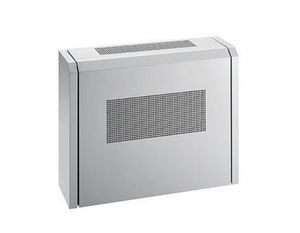
Monoblock (from one module). All elements are in a single body. According to the location, window, wall and mobile air conditioners are distinguished. Window worked on the principle of evaporation, they were installed in the opening of the window. With the advent of plastic windows, this equipment was no longer used.
Wall the monoblock belongs to the compression type: it consists of an evaporator and an air blower. For installation, it is required to punch out two holes - for the supply of fresh air and the removal of hot air from the condenser.
Mobile or floor-standing Compression air conditioners and coolers work on the principle of evaporation. Installation is not required: the heated air outlet hose is directed into a window or a hole in the wall.
Split systems by the way of action compression. Divided into 2 modules, interconnected by an electric cable and pipes for refrigerant flow. The outdoor unit is used to dump heat into the street and is located on the outside of the wall. It has a freon cooling condenser, a fan and a compressor. The interior of the split system can be wall, floor, ceiling and mobile - the first option is in the greatest demand.
The functionality of the air conditioner allows you to cool and heat the air, clean it from dust and street gases, and maintain the humidity in the specified range. The structure is controlled by a remote control.
The principle of operation of a monoblock and a split system is the same - bringing the air in the apartment up to condition. The process consists in pumping freon from one chamber to another.
Evaporative cold
Principle of operation:
- air enters through the cartridge;
- heat from the incoming stream is directed to the working grates;
- water droplets evaporate from the heated element, the temperature decreases, and the air at the outlet of the air conditioner becomes cold.
Simple coolers work according to the principle of evaporation, their power is determined by the moisture content of the incoming stream: in a dry environment, water evaporates more easily, and the device works more efficiently. In hot summers with high humidity, the performance of the evaporative air conditioner drops to almost zero.
Compression temperature reduction
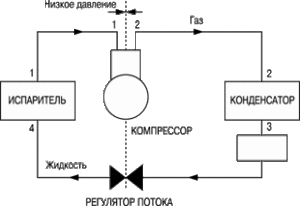
The principle of temperature reduction is identical to the processes taking place in the refrigerator compartment. Main elements: compressor, condenser, evaporator.
The entire system operates in a closed mode - freon circulates through copper or aluminum tubes between the functional parts, which transfers heat from the room air to the outside. The principle is based on the property of a liquid refrigerant to boil and turn into gas at a temperature of 10―20 ° C, depending on the pressure in the system.
Principle of operation:
- the evaporator is under low pressure, freon is transferred from the liquid phase to the gaseous state and takes heat from the incoming air stream;
- the heated vapor of the refrigerant enters the compressor through the pipes, the pressure is injected, due to which the boiling point of the freon rises, the gas passes into the initial liquid state;
- the evaporator receives the condensed heat carrier of the second circle, hot air is pumped outside by means of the fan.
By cyclical changes in the pressure of the refrigerant in the pipes, the temperature of freon and room air is controlled through it. The efficiency of this cooling method is higher than that of evaporative cooling.
Differences between air conditioners
The difference between a split system and a monoblock:
- The number of executive modules. The monoblock has one unit, the split system has two, internal and external.
- Noise level. The split system is almost inaudible in the room, since the energy-intensive unit is placed on the outer side of the wall, and the indoor module is much quieter than an air conditioner with one body.
- Condensate removal. The split system independently drains water into the street through a drain pipe. In the monoblock, moisture accumulates in a container inside the device, it must be drained manually.
The set of functions of air conditioners practically does not differ: cooling, heating, air filtration are provided.
Functionality
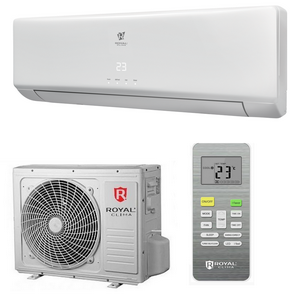
Air conditioners are constantly being improved. In addition to adjusting the room temperature, there are new possibilities for increasing comfort. Additional functions:
- Auto mode. The device itself controls the selection of the mode and maintains the temperature at a comfortable level.
- Airing. Only the indoor fan is running, the compressor is off. There is a uniform distribution of air masses in the room.
- Setting the temperature. The control accuracy is ± 1ºС in the range of 16―30ºС. The sensor is installed in the indoor unit or in the remote control.
- The speed of rotation of the fan impeller changes the amount of flow passing through the indoor module and determines the capacity of the air conditioner in m3 / h. The minimum flow rate for room coolers is 5 m3 per hour, the maximum is up to 60 m3 per hour.
- The air flow direction is vertically adjustable by means of horizontal louvers. The plates are fixed in several positions or automatically swing, distributing the air evenly.
When buying an air conditioner, the consumer selects the optimal number of functions to create the most suitable climate and level of comfort.
What to consider when choosing
It is impossible to answer unequivocally which is better, a split system or a monoblock. The determining factor is usually the price of the product: monoblocks are much cheaper. Be sure to take into account the conditions in which climate technology will work:
- the number of windows, their material and sizes;
- the purpose of the room is a common room or a children's room;
- condition of heating devices, location;
- the side facing the windows.
When choosing an air conditioner, you should consider the floor. The final cost of installing the device depends on this: the higher, the more difficult the installation is and the more expensive the work is.

